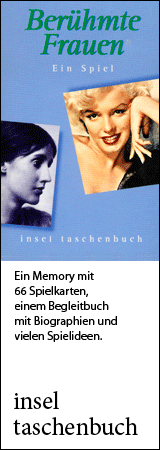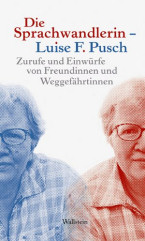Biographies Ruth Landshoff-Yorck

(Ruth Levy [maiden name], Ruth Landshoff, Rut Landshoff, Ruth Landshoff Countess Yorck von Wartenburg [married name], Countess Ruth Yorck von Wartenburg, Ruth L. Yorck, R.L. Yorck, Ruth Yorck, Ruth Landshoff-Yorck)
born on January 7, 1904 in Berlin. Germany
died on January 19, 1966 in New York City, USA
German-US-American actress, writer, journalist and translator
120th birthday on January 7, 2024
Biography
She was a woman of many names. Born in 1904, she was first named after her father, the engineer Eduard Levy, but then, like her two older brothers, called herself after her mother, the opera singer Else Landshoff. During the Weimar Republic, she was known as Rut Landshoff - Rut without the h she had deemed superfluous. Through her marriage she became Countess Yorck; in the USA she was known as Ruth Yorck; and after the Second World War she used Ruth Landshoff-Yorck in Germany.
She came from a middle-class Jewish family and grew up in Berlin. Her uncle was the well-known publisher Samuel Fischer, who introduced young Ruth to literary greats such as Thomas Mann and Gerhart Hauptmann.
She was discovered by Friedrich Wilhelm Murnau while still a schoolgirl and played the role of Ruth in his film Nosferatu - A Symphony of Horror (1922). She also made a brief appearance in the silent film Die Gezeichneten (Love One Another, 1922) by Carl Theodor Dreyer.
After finishing secondary school, she attended Reinhardt's drama school. Various small appearances in Berlin, Leipzig and Vienna followed after her graduation. In 1927, she appeared on stage in Vienna together with Marlene Dietrich, who was hardly known at the time. Ruth Landshoff-Yorck claimed to have discovered her, as she suggested Dietrich for the play The Blue Angel. She performed in Carl Sternheim’s Die Schule von Uznach (1926), together with his daughter Dorothea, known as Mopsa, with whom she also lived in Vienna.
She would later remark self-critically that she had had no talent for acting at all. She tried her hand at various things—film, theater, painting—as creative explorations until she discovered writing. Her early volumes of poetry included some of her own illustrations.
In the 1920s, she was part of the bohemian scene in Berlin. With no financial constraints, she was free to give anything she liked a try. She wore her hair short and cultivated the image of the androgynous garçonne; she loved transforming herself and playing with gender roles. She played tennis and field hockey, rode a motorcycle and was one of the first women to drive a car in Berlin.
She would routinely travel throughout Europe, attending both the Salzburg Festival and Toscanini's performances in Milan every year. At the time, she was in a relationship with the poet and playwright Karl Gustav Vollmoeller, who was 30 years her senior. Through him, she met numerous personalities of Berlin's cultural life, such as Charlie Chaplin, whom she looked after during his stay in Berlin in 1931.
Rut Landshoff came to writing by chance. She met Kurt Korff, who then was one of the leading program directors at Ullstein-Verlag, at a party. He offered her the opportunity to write for the publishing house - and so she wrote about everything that came into her head and was successful.
Landshoff worked as a reporter and columnist for Ullstein from 1927 to 1930, primarily for the illustrated fashion magazine Die Dame, but also for the German edition of Vogue, Sport und Bild, the Berliner Illustrirte Zeitung, Tempo and Literarische Welt. She mainly wrote zeitgeist articles—lively, fast-paced texts, reports, literary sketches, travel impressions and short novellas. The vignettes often dealt with the sensitivities of young women known at the time as the New Women. Quickly penned by a New Woman, they portrayed the New Woman living life quickly. Such short texts were extremely popular in the Weimar Republic. She used a narrative style that was essentially more about authenticity and less about invention.
Her first volume of poetry was published in 1929 as a private edition with six poems and six of her own illustrations. Three more volumes of poetry were published later when she was in exile, also privately. Rowohlt published her first novel Die Vielen und der Eine in 1930; the main character, a young Berlin reporter named Louis Lou, bore a strong resemblance to the author. It was a respectable success.
She had already written the second of the seven novels for which she had signed a contract. The galley proofs of this second novel, Life of a Dancer, had been sent to her in Paris, but the novel was never published in Germany. She took this and the third novel she wrote, Die Schatzsucher von Venedig, with her into exile in the United States. The three were very different: the first was a novel inspired by New Objectivity; the second, a biographical novel; and the third was a light literary novel. However, her budding career as a writer ended when the Nazis seized power.
Landshoff had been living mainly in the south of France since the end of 1932, where - after a brief engagement to the cellist Francesco Mendelsohn - she married the banker Friedrich David Graf Yorck von Wartenburg at the end of 1930, with a divorce following in 1937. Over the next few years, she commuted between France and Italy, but also returned to Berlin from time to time, as her parents still lived there.
With the help of actress Helen Hayes, she managed to obtain a residence permit for the United States, and moved there in March 1937. She was considered an “exiled countess” and—as evidenced by the portraits of Carson McCullers and Thornton Wilder that were published later as biographical impressions—she swiftly gained access to literary circles in her new home.
She had little contact with German emigrants. She quickly succeeded in writing in English. At first, it was smaller works, such as articles and poems in American magazines - now under the name Ruth Yorck or Ruth Landshoff-Yorck - in which she addressed political issues of emigration, which met with interest in the United States. Looking back on the time before fascism, she saw herself as “the absurd young girl who doesn't understand her times.” But she understood now and thus turned her writing into a literary battle against National Socialism. She wrote radio plays and stories with clear propagandistic overtones. She was an announcer for the radio station Voice of America, which was founded in 1942 by the Office of War Information to broadcast programs for the German-occupied parts of Europe. In addition to the Office of War Information, she worked for other institutions that fought against fascism.
Her first novel in English, The Man Who Killed Hitler, written together with Dean Southern Jennings and David Malcolmson, was published in the United States in 1939. In it, a Viennese doctor decides to assassinate Hitler after the murder of his Jewish wife. This novel was immediately translated into French.
Her next two novels also focused on resistance to fascism. Sixty to go. A Novel of the Riviera Underground (1944) is about those in France who helped Germans fleeing the Nazis. Lili Marlene (1945) is the fictional diary of a Nazi follower who only begins to realize that she must resist the regime after the murder of her two children. Excerpts from this novel, which became a bestseller, were broadcast on German radio after the end of the war as part of the American re-education program.
She enjoyed considerable success. But unlike Vicki Baum, with whom she is often compared, she was unable to build a new career as a writer outside of the category of a political author in exile. Her last published novel, So Cold the Night. A Novel of Suspense (1948) was also not a success.
A permanent return to Germany was out of the question for her and she officially became a US citizen. She would visit Europe for longer periods, spending most of her time in France and England. But she also traveled to Germany, which left her with ambivalent impressions. However, she made contacts there with younger authors, whom she introduced in the United States. For example, she wrote about Gruppe 47, Hans Magnus Enzensberger, Uwe Johnson and Günter Grass in Aufbau.
On the other hand, she was also deeply involved with American culture and tried to introduce its young authors to Germany, such as the writer Carson McCullers and the musical lyricist John Latouche. She saw herself as a mediator between cultures.
Encouraged by her contacts in Germany, she tried again to write in German after the Second World War. Occasional contributions appeared in German-language newspapers and magazines such as Frankfurter Hefte, the art magazine DU and Texte und Zeichen. In 1952 the volume das ungeheuer zärtlichkeit was published. However, it was largely overlooked and she was unable to build on the earlier successes she had experienced in Germany.
From the 1950s onwards, she published in two languages. She spoke of the “bilingual dichotomy” that made her twice uprooted and thus made it twice as difficult for her to feel at home. She was neither as rooted in American literature as a native speaker nor was she any longer rooted in German.
Landshoff-Yorck also worked in the USA as an author of stage plays and television shows. She wrote several socially critical plays, some of which were performed in small off-Broadway theaters. In the play Lullaby for a Dying Man she addressed two taboos: homosexuality and the death penalty. In other texts, she dealt with current American topics, e.g. racism and McCarthy's anti-communist agitation. She was regarded as the Poet Lady of Greenwich Village who had dedicated herself entirely to the avant-garde.
The last book published by Ruth Landshoff-Yorck during her lifetime was her biographical impressions—published in 1963 under the title Klatsch, Ruhm und kleine Feuer. The volume is a collection of portraits of numerous people she knew personally: from Charlie Chaplin to Annemarie Schwarzenbach, and from Jean-Paul Sartre to Arturo Toscanini.
Ruth Landshoff-Yorck died on January 19, 1966 during a theater performance of Marat/Sade by Peter Weiss, an emigrant like her, in New York.
(Text from 2014; translated with DeepL.com; edited by Ramona Fararo, 2023.)
Please consult the German version for additional information (pictures, sources, videos, bibliography).
Author: Doris Hermanns
Quotes
In all the time I've been a writer in Germany, I've never had an unprinted manuscript. Everything was printed somewhere. And I didn't even know that was an exceptional case.
About the dancer Lena Amsel: “That fascinated me. So it was possible after all to begin life twice - to start on a road that leads from success to failure - and then to start all over again on a different road and remain successful there.”
She had created her own milieu… from the circles of art, the stage of the jeunesse dorée, the avant-garde of all areas, without ever losing her attachment to her bourgeois origins… But at the same time, she was always drawn to the great minds of the older generation, who found in her a quiet listener and who rejoiced in her youth and beauty. (From an obituary)
If you hold the rights to one or more of the images on this page and object to its/their appearance here, please contact Fembio.



